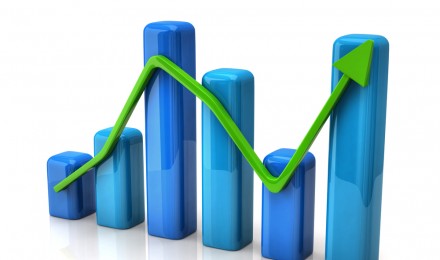You probably do not associate yoga with money. But maybe you should. Why? Because one of the latest investment fads (I can’t think of a better word) is using yoga to cope with your financial situations and decisions.
A recent news story detailed how a major financial adviser (no other way to look at a firm managing $800 million) goes around teaching “The Money Breath.”
It’s supposedly a technique to get through money decisions. Participants inhale for three counts, hold their breath once, then exhale for six counts.
It’s easy to make fun of these things and even the adherents admit they sound like “California quack jobs.” I am not sure what exactly that is, but it is not good.
Now before you accuse me of intolerance and anything else, I have tried yoga, though for desired relaxation and not investment purposes. I enrolled in a class and lasted through two sessions. It was the quietest (and maybe the calmest group of people I ever encountered), but I quickly concluded it was not for me, though it may have worked fine for others (they certainly seemed quiet enough about it). So I am not an automatic yoga debunker.
Most of the newspaper references I have read to its use are related to the stock market, but there are also possible spillovers for real estate investors. Can some tenets of Eastern style religion like yoga help us as spiritual guides in our own real estate investment world?
My comparison here is sifting sand along the ocean. When you do that, you get mostly shards of glass, and possibly beer bottles, but occasionally, you might turn up a few coins. Not enough to pay a full day’s parking meter or anything like that but a few coins.
So don’t expect a lot from yogic investments, but let’s take a look at it.
What yoga teaches investment participant’s is to avoid buying on emotions, but instead look at stocks when they hit bottom. It’s called “disciplined rebalancing.”
The yoga proponents point out that the discipline gets investors away from their “root charka.” That is an energy
point at the base of the spine which is associated with our more primitive survival needs.
There’s even a questionnaire that tells you if you are “yogic investor,” which is good, in this case.
The positive about all this: investing is often very emotional. Yoga stresses balance.
While I fall short of recommending that advocates take up a typical yoga pose when evaluating their investments (that is to spread your legs wide and grab your feet while pushing your head to the floor), I do see some value in what teach.
The balance part of yoga, for example, is invaluable. What does that mean to practical real estate investors?
Avoid emotion, of course, and keep your head clear (however you have to contort it) at all times.
Yoga philosophy also makes the point that few of us want to acknowledge: nothing is permanent. Everything changes.
That’s not to anyone’s liking because it means we will not be there forever, and while we may be happy and satisfied at the present moment, you can count on that situation being subject to a change (without any assurance that it will get better).
The investor market is similar to stocks. Effective and successful participants have to cope constantly with new and ever-changing situations.
So perhaps we don’t have to breathe any differently or take up yoga positions with our head on the floor to give the brain more blood, but it doesn’t take any new age wisdom to know that logic trumps emotion when it comes to any type of investment. That’s why you want to be a yogic investor.
You probably do not associate yoga with money. But maybe you should. Why? Because one of the latest investment fads (I can’t think of a better word) is using yoga to cope with your financial situations and decisions.
A recent news story detailed how a major financial adviser (no other way to look at a firm managing $800 million) goes around teaching “The Money Breath.”
It’s supposedly a technique to get through money decisions. Participants inhale for three counts, hold their breath once, then exhale for six counts.
It’s easy to make fun of these things and even the adherents admit they sound like “California quack jobs.” I am not sure what exactly that is, but it is not good.
Now before you accuse me of intolerance and anything else, I have tried yoga, though for desired relaxation and not investment purposes. I enrolled in a class and lasted through two sessions. It was the quietest (and maybe the calmest group of people I ever encountered), but I quickly concluded it was not for me, though it may have worked fine for others (they certainly seemed quiet enough about it). So I am not an automatic yoga debunker.
Most of the newspaper references I have read to its use are related to the stock market, but there are also possible spillovers for real estate investors. Can some tenets of Eastern style religion like yoga help us as spiritual guides in our own real estate investment world?
My comparison here is sifting sand along the ocean. When you do that, you get mostly shards of glass, and possibly beer bottles, but occasionally, you might turn up a few coins. Not enough to pay a full day’s parking meter or anything like that but a few coins.
So don’t expect a lot from yogic investments, but let’s take a look at it.
What yoga teaches investment participant’s is to avoid buying on emotions, but instead look at stocks when they hit bottom. It’s called “disciplined rebalancing.”
The yoga proponents point out that the discipline gets investors away from their “root charka.” That is an energy
point at the base of the spine which is associated with our more primitive survival needs.
There’s even a questionnaire that tells you if you are “yogic investor,” which is good, in this case.
The positive about all this: investing is often very emotional. Yoga stresses balance.
While I fall short of recommending that advocates take up a typical yoga pose when evaluating their investments (that is to spread your legs wide and grab your feet while pushing your head to the floor), I do see some value in what teach.
The balance part of yoga, for example, is invaluable. What does that mean to practical real estate investors?
Avoid emotion, of course, and keep your head clear (however you have to contort it) at all times.
Yoga philosophy also makes the point that few of us want to acknowledge: nothing is permanent. Everything changes.
That’s not to anyone’s liking because it means we will not be there forever, and while we may be happy and satisfied at the present moment, you can count on that situation being subject to a change (without any assurance that it will get better).
The investor market is similar to stocks. Effective and successful participants have to cope constantly with new and ever-changing situations.
So perhaps we don’t have to breathe any differently or take up yoga positions with our head on the floor to give the brain more blood, but it doesn’t take any new age wisdom to know that logic trumps emotion when it comes to any type of investment. That’s why you want to be a yogic investor.







